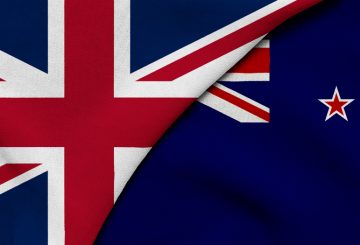ニュージーランド政府とさらに4社は、農業排出量削減に向けた同国の取り組みを支援するために、AgrizeRonzにさらに1,800万ドルを投資しています。トッド・マクレイ農業相は、ニュージーランドの堅調な経済を支えるには、効果的で手頃な排出量削減ソリューションが必要であると述べました。
Agrizeronzは、農民が気候変動に関する国際的な義務を果たすための実践的なツールの開発と導入を早めることを目的とした官民パートナーシップです。a2 Milk Company、ANZバンク・ニュージーランド、ASB銀行がAgrizeronzの新規株主として加わり、3年間で900万ドルを拠出しました。政府はこの資金に充てられ、農場の排出量を削減するための新しいツールや技術の開発と商業化を支援します。
これらの新しい株主は、クラウンとともに、ANZCO、フォンテラ、ラボバンク、レイブンズダウン、シルバーファーンファーム、シンレイトなどの当初の株主に加わります。これにより、パートナーシップの最初の4年間におけるアグリゼロンツへの総投資額は1億8,300万ドルになり、その資金の半分はクラウンからのものです。
McClayは、新規株主からの投資は、農家に排出削減ツールをより迅速に提供したいというニュージーランドの企業のコミットメントが高まっていることを示していると述べています。彼は、政府と民間企業の両方の支援があれば、ニュージーランドは食品・繊維部門の生産性と収益性を維持しつつ、農業排出量を削減するためのツールや慣行の開発において世界をリードできると考えています。
Agrizeronzは、農業排出量に関する気候行動センターの合弁会社です。このセンターは、農場で使用できるツールの開発と商業化を推進することを目的としており、基礎研究と排出削減の研究開発に焦点を当てたニュージーランド農業温室効果ガス研究センターも強化されています。
クラウンは、財務大臣と農業大臣が共同で保有するAgrizeronzの株式の 50% を単一ブロック所有しています。アグリゼロンツは2023年1月17日に有限責任会社として設立され、その株式保有額はパートナーの4年間の総拠出額に比例します。クラウンは以前、年間最大5,000万ドルの追加投資額を同額で賄うことを約束していました。新しい株主が加わることで、業界からのコミットメントとクラウンの拠出金により、合弁事業の最初の4年間に1億8300万ドルが投資されることになります。






























































